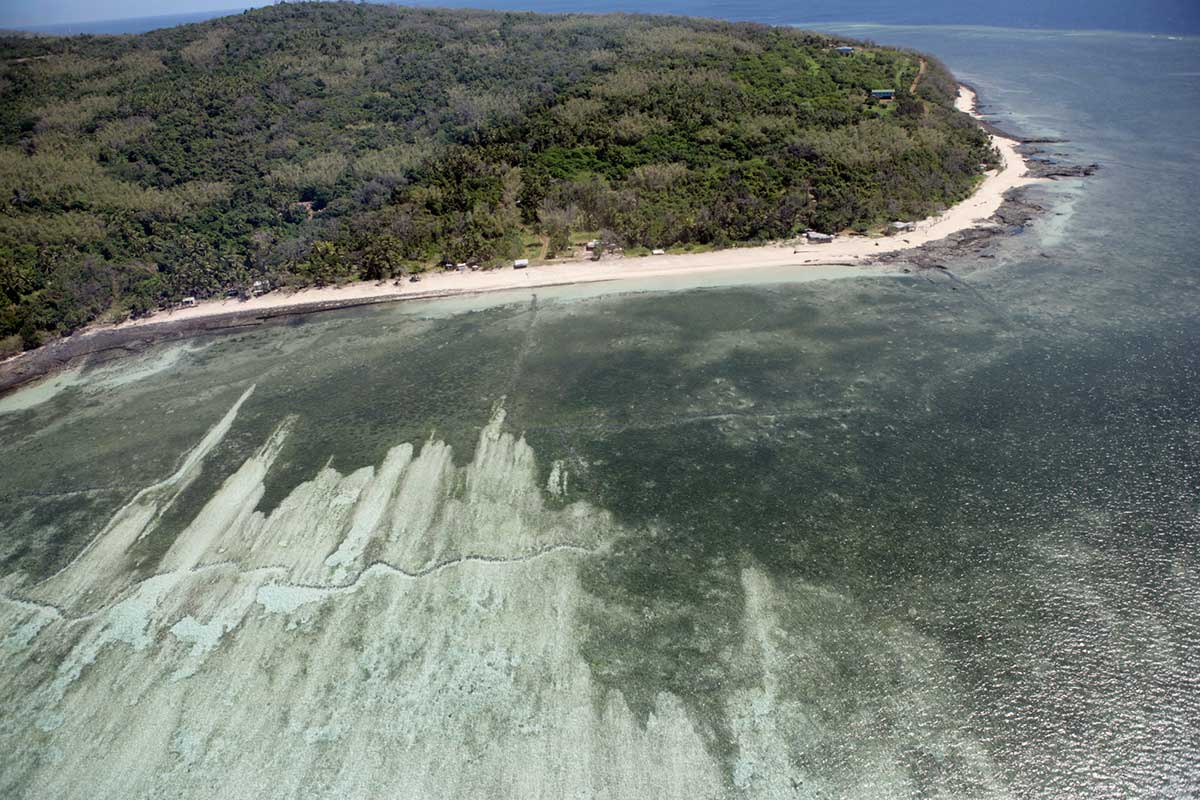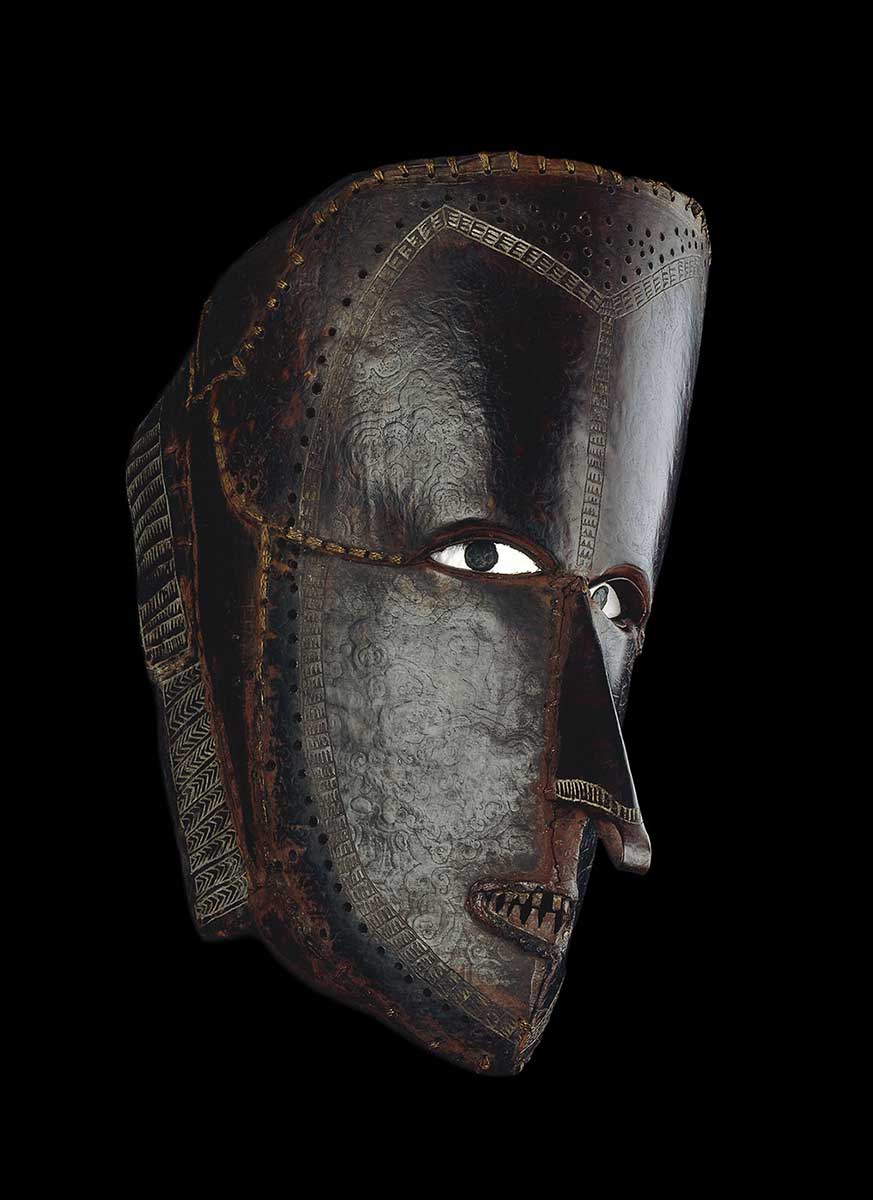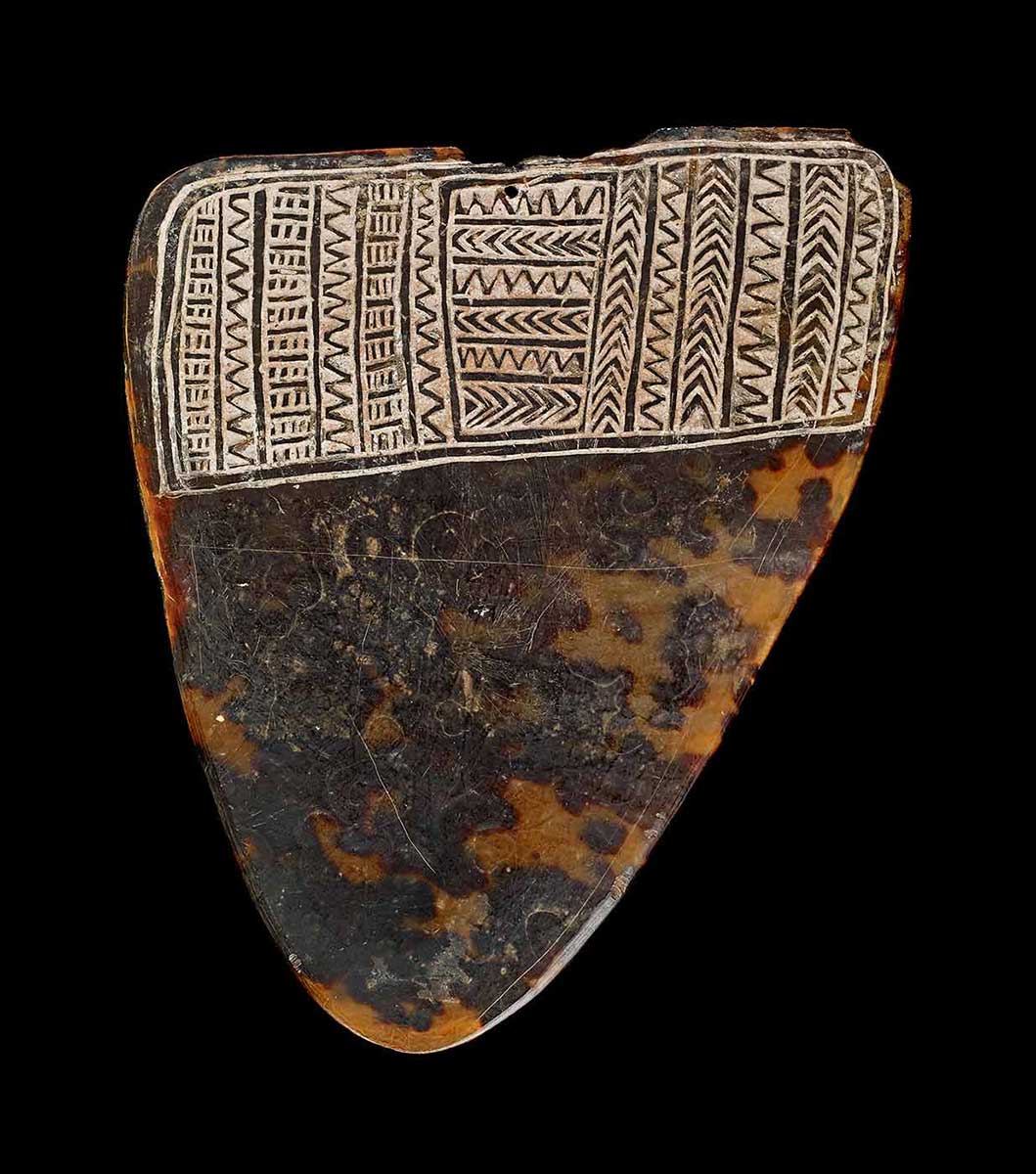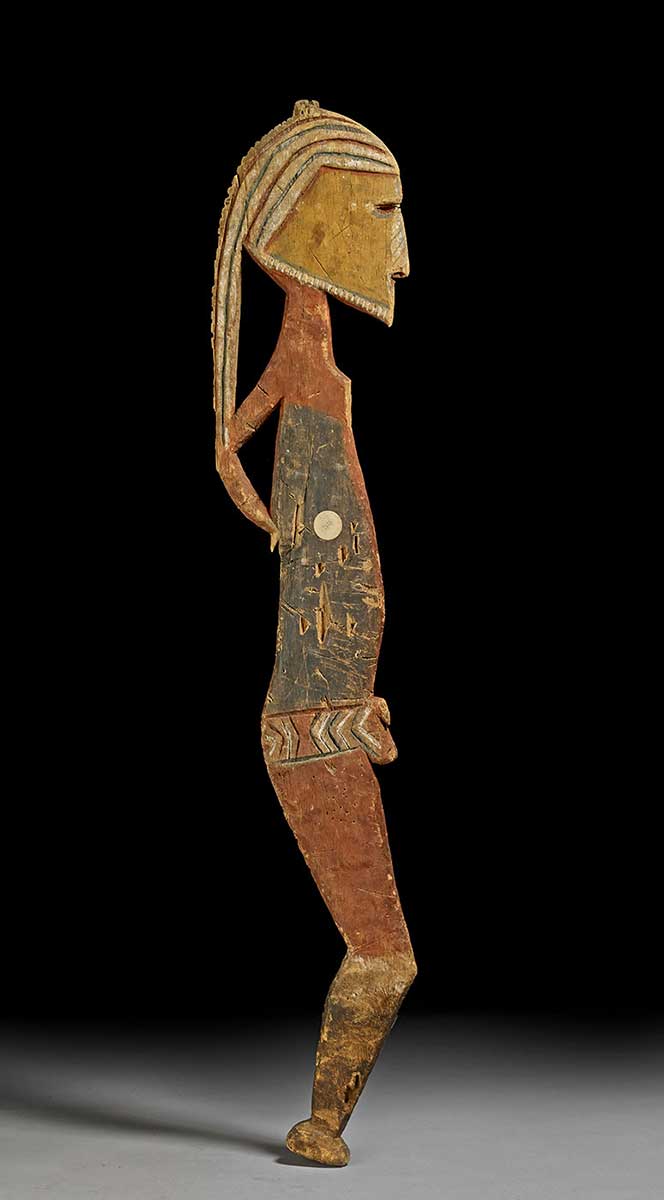Fishers, divers and traders
Alo Tapim, Meriam elder, 2014:
When colonisation took place it was the understanding that there was no-one living here, you know, the Mabo story ... It’s very important for us to give the message, that we are the first Australians.
Many Australians recognise Mer (Murray Island) as the birthplace of Eddie Koiki Mabo, who took on the Australian legal system – and won. In 1992, the High Court overturned the doctrine of terra nullius and recognised the rights of Indigenous Australians over their lands.
But there is a longer history of Mer, pervaded by the sea. The people of Mer have always been fishers, divers and traders. Stories abound of a rich trade between Meriam people and early British visitors.
Lieutenant George Borlase Kempthorne, commander of the Tigris, described the lively exchange between the Islanders and his crew during a brief visit in 1836:
George Borlase Kempthorne, ‘A narrative of a voyage’, Transactions of the Bombay Geographical Society, 1840:
The Natives [held] up in their hands the articles they wished to dispose of, consisting of cocoanuts, yams, plantains, tortoise-shells, and their implements of war ... In exchange they received small looking-glasses, empty bottles, beads, clasp-knives, axes, and old clothes; but iron was of all commodities ...most prized.
Old objects
Pop le-op (turtle-shell mask)
In 1855, the Royal Navy’s Haslar Medical Museum transferred this mask, along with other material, to the British Museum.
Established in the 1820s, Haslar featured objects from around the world, brought back by naval ships. From the 1830s, numerous British ships stopped at Mer, including HMS Fly and HMS Rattlesnake.
Turtle-shell ornament
Lieutenant George Borlase Kempthorne, commander of the Tigris, collected this shell ornament in 1836, during a mission to find survivors from the wreck of the James Eaton. Kempthorne, a Cornishman, gave it to the Royal Institution of Cornwall in 1841.
The British Museum acquired the ornament from the Royal Cornwall Museum in 1986. It is hard to believe that early visitors like Kempthorne believed that the ‘wretched carvings ... almost destroy the beauty of the shell’.
Other visitors to the Torres Strait were struck by the richness of the culture there. Alfred Cort Haddon first visited the Torres Strait in 1888. He left Dublin as a zoologist, but soon found it was the people who captivated him most.
Haddon spent four months on Mer in early 1889, returning almost 10 years later to lead the 1898 Cambridge University Anthropological Expedition. Haddon’s work, including the objects he collected, remains significant for Torres Strait communities. His published records became an essential part of the evidence used in the native title legal case fought by Eddie Koiki Mabo and others in the 1980s and 1990s.
During the months he spent on Mer in 1888–89, Haddon worked closely with Meriam people.He accompanied them to church, listened to their traditional stories, witnessed dances and hunting practices, and commissioned and bought artefacts.
Sokop madub (human figure) garden charm
Haddon took a large collection of Torres Strait Islander objects and photographs back to London. Most of these, including this charm (right), he gave to the British Museum in 1889, forming the largest holding of Torres Strait material in any museum at the time.
letter from Alfred Cort Haddon to Charles Hercules Read, British Museum keeper, 1891:
I had definitely decided to take up anthropology seriously ... Out of this year I shall spend quite ¾ of my time on anthropology.
Alo Tapim, Meriam elder, 2014:
This art reflects the society, the Meriam people or the eastern Island people. That art mirror that society at that time.



